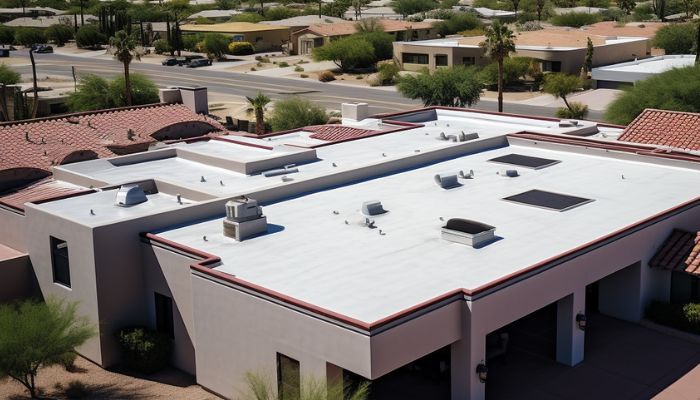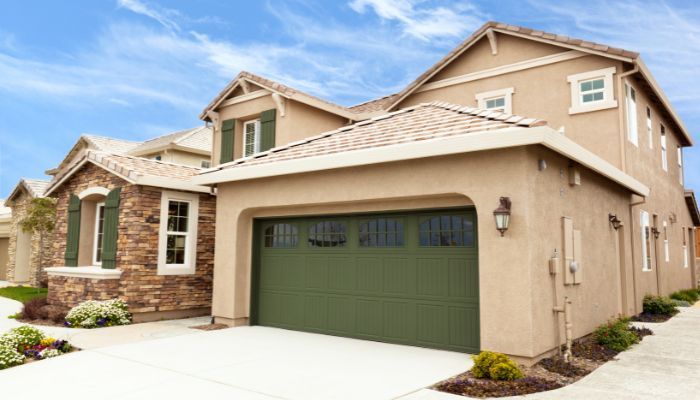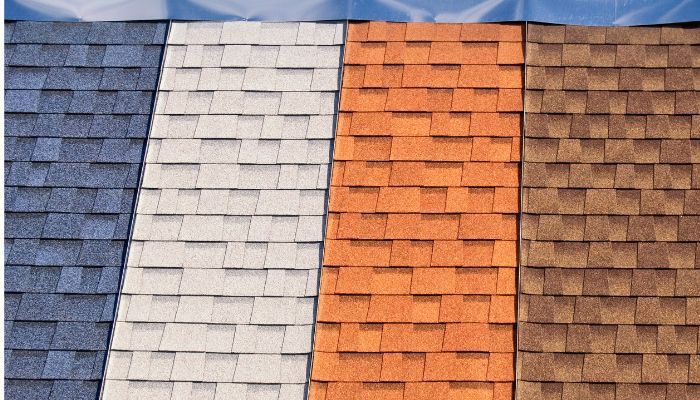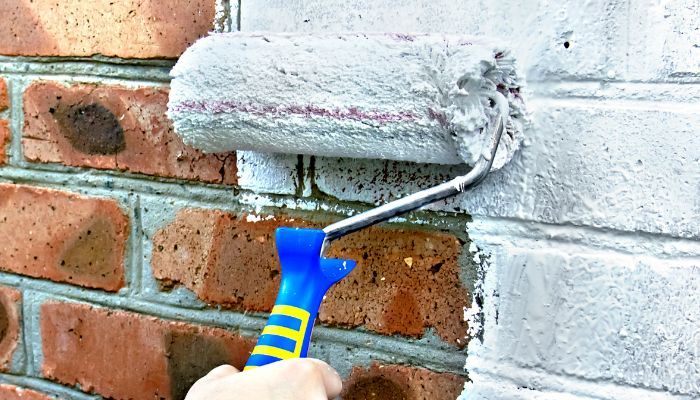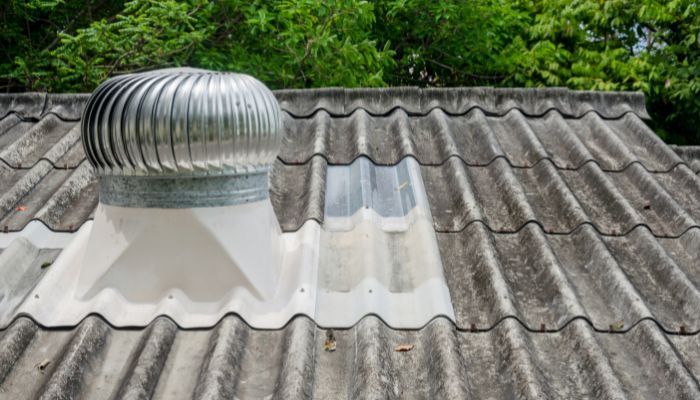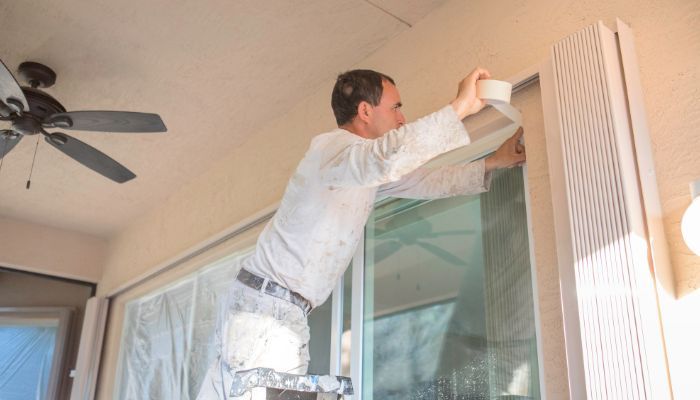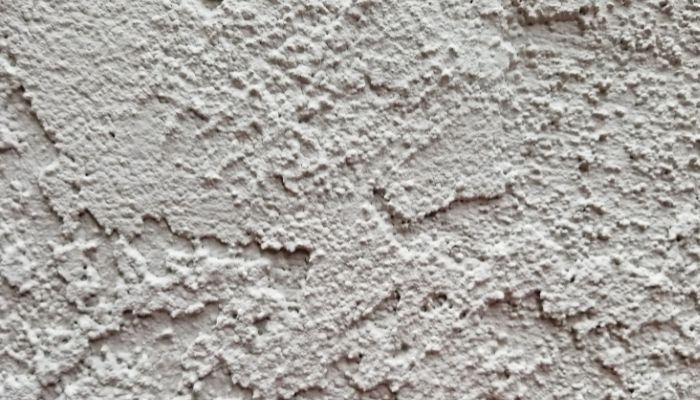The Basics of Roof Coating: What Every Homeowner Should Know
Adding a coating to the roof will give the roofing components an extra layer of protection and help keep them in good condition for years to come! And as every homeowner knows, the roof is one of the most important aspects of your home.
A home’s roof acts as its first line of defense against the elements, be it rain, sun, or hail. Yet, despite its significance, many homeowners overlook essential upkeep measures, notably the magic of roof coating. At first glance, it might seem like just another layer of paint or an unnecessary expense.
However, delve a little deeper and you’ll discover that roof coating plays a pivotal role in preserving the life of your roof, boosting energy efficiency, and even enhancing the overall appearance of your home. If you’re a homeowner eager to keep your sanctuary in tip-top shape, this blog will guide you through the basics of roof coating and why it should be on your radar.
What is Roof Coating?
Roof coating, at its essence, is a protective layer designed to be applied directly onto the surface of a roof. Think of it as a shield, specially formulated to defend your roof from the everyday wear and tear it encounters. Depending on its composition, a roof coating can offer varying benefits, from reflecting harmful UV rays to preventing water infiltration.
Now, it’s important to understand that there isn’t a one-size-fits-all when it comes to these coatings. Different types cater to distinct needs. For instance, reflective coatings are engineered to bounce back sunlight, ensuring your home remains cool during scorching summer days. Asphalt coatings, on the other hand, are primarily known for their waterproofing properties. For those leaning towards a more modern approach, polyurethane coatings might catch your interest, renowned for their durability and versatility in both flat and sloped roofs.
Why should homeowners care about this extra layer? Apart from the obvious protective measures, roof coatings can save you money in the long run. By enhancing the longevity of your roof and improving energy efficiency, this seemingly simple addition could mean fewer repairs, replacements, and shockingly high utility bills in your future.
How Does Roof Coating Work?
At its core, the science behind roof coating is both intriguing and practical. These coatings, while appearing as mere layers on the roof, serve as guardians against external elements, particularly the relentless sun. They either reflect or absorb UV rays, depending on their type and formulation. This function not only keeps your home cooler but also prevents the premature aging of roofing materials. Imagine a sunscreen for your house; just as it prevents skin damage, a roof coating shields your roof from potential harm.
Moreover, a well-applied roof coating creates a seamless barrier, significantly reducing the chances of water seepage. This feature is especially vital to protect against heavy monsoons here in Southern Arizona. By keeping moisture at bay, roof coatings prevent the growth of molds and algae, ensuring the structural integrity of your roof isn’t compromised.
Beyond protection, one of the unsung benefits of roof coatings is how they can prolong a roof’s lifespan. Every day, a roof faces the brunt of weather patterns, from scorching heatwaves to high winds and heavy rainfall. Over time, these conditions can cause roofs to crack, warp, or degrade.
However, with the shield of a roof coating, the impact of these adversities is greatly mitigated. In essence, the roof coating acts as a protective buffer, enhancing the longevity of the roof and ensuring homeowners get the most out of their initial roofing investment.
Key Benefits of Roof Coating
Roof coatings offer a range of benefits, both immediate and long-term. Roof coatings can protect your roof from the sun’s UV rays, which can cause it to fade and crack over time. Roof coatings are seamless, and when installed correctly, can solve roof leaks. Roof coatings also help protect your roof from rain and sun, which can cause damage and deterioration over time. Here are some additional advantages of applying a roof coating:
- Prolonged Roof Lifespan: Roof coatings provide an added layer of protection against UV radiation, weathering, and other environmental factors, ultimately extending the life of the roof.
- Energy Efficiency: Reflective roof coatings can repel a significant amount of solar radiation, keeping the building cooler and reducing the need for air conditioning. This can result in noticeable energy savings, especially in hotter climates.
- Prevention of Leaks: Many roof coatings are waterproof, forming a seamless barrier that can prevent water infiltration, protecting the roof from potential water damage and the interior of the building from leaks.
- Cost Savings: By extending the lifespan of a roof and preventing potential damage, roof coatings can save homeowners and businesses the cost of early roof replacements and frequent repairs.
- Aesthetic Enhancement: Over time, roofs can appear aged or worn. A fresh coating can rejuvenate the look of a roof, improving the overall appearance of a building.
- Temperature Regulation: Besides reflecting sunlight, certain roof coatings can provide insulative properties, helping to keep buildings warm during colder months and cool during hotter months.
- Resistance to Mold and Algae: Many roof coatings have properties that prevent the growth of mold, mildew, and algae, which can degrade roofing materials over time.
- Versatility: There are roof coatings available for nearly every type of roofing material, from asphalt and metal to concrete and EPDM. This makes it possible for almost any building to benefit from a roof coating.
In summary, roof coatings are a valuable addition to a building’s maintenance strategy, offering protective, aesthetic, and cost-saving benefits. It’s essential for homeowners and facility managers to understand these advantages and consider a roof coating as a proactive measure in roof maintenance and longevity.
When Should You Consider a Roof Coating?
The timing of a roof coating application is pivotal to maximizing its benefits. While it’s tempting to think of it only when noticeable problems arise, proactive consideration can save you both time and money. First and foremost, the age of your current roof is a decisive factor. As roofs approach the middle of their expected lifespan, they might benefit from the protective embrace of a coating, adding years to their service life.
Visible signs of wear and tear, like minor cracks, fading, or uneven surfaces, are tell-tale indicators that a roof might be ripe for coating. Acting promptly upon spotting these signs can prevent minor issues from escalating into costly repairs. Additionally, after any professional inspection or repair, a coating might be recommended to seal the dealt areas and provide an extra layer of defense.
Furthermore, your local climate should play a central role in your decision-making. If you reside in areas where the sun blazes with intensity or regions that get battered by heavy rain or hail like in Southern Arizona, a roof coating can act as a safeguard against these extremities, ensuring longevity and sustained performance. In essence, while roof coatings can be a reactive measure to existing problems, their true value shines when used proactively, ensuring a roof’s extended health and functionality.
Local Tucson Roof Coating Services Near You
The roof is more than just a structural component of our homes; it’s standing guard against the unpredictable whims of Mother Nature. As homeowners, our role is to ensure that this guardian remains resilient and ready to protect for years to come.
Roof coatings emerge as a potent tool in this endeavor. They not only extend the life of our roofs but also bring about a wide range of benefits, from energy savings to protection of your investment. By understanding the ins and outs of roof coatings, we equip ourselves with the tools to make informed decisions, ensuring our homes remain in good condition for years to come.
For residents of Tucson, AZ, the intense sun and fluctuating weather can take a toll on your roofs. Enter AA Brite 24/7 – the leading professional roof coating service in the area! With years of expertise under our belt and a commitment to excellence, we offer Tucson homeowners the highest quality roof coatings designed to withstand the unique challenges of Arizona’s climate.
Our skilled technicians use only the best materials, ensuring your roof not only looks pristine but also offers maximum protection against the elements. Whether you’re looking to extend the lifespan of your existing roof, save on energy costs, or simply give your home a fresh look, AA Brite 24/7 has got you covered. Invest in the best; let AA Brite fortify your home against Tucson’s harsh weather.
Frequently Asked Questions About Roof Coating
How often should I get my roof coated?
The frequency depends on the type of coating used, the local climate, and the condition of the roof. Generally, a high-quality roof coating can last anywhere from 5 to 15 years with proper routine maintenance. It’s a good practice to have a professional inspect your roof annually and consult with your roofing expert to determine if a new coating is needed.
Can I apply a roof coating myself, or should I hire a professional?
Applying a roof coating requires expertise to ensure it’s done correctly and safely. A professional will prep the roof by cleaning it and repairing any damages, ensuring the coating adheres properly. They’ll also be knowledgeable about the best type of coating for your specific roof and climate. For optimal results and longevity, it’s recommended to hire a professional.
Will a roof coating change the appearance of my roof?
Yes, a roof coating can refresh the appearance of your roof, making it look cleaner and newer. Some coatings are available in various colors, allowing homeowners to change the color of their roofs or opt for a reflective coating that appears brighter and can help in energy savings.

